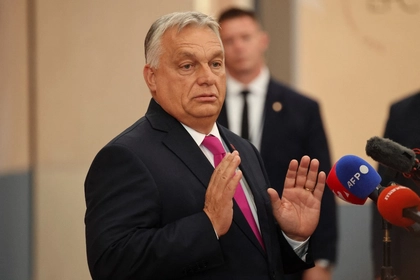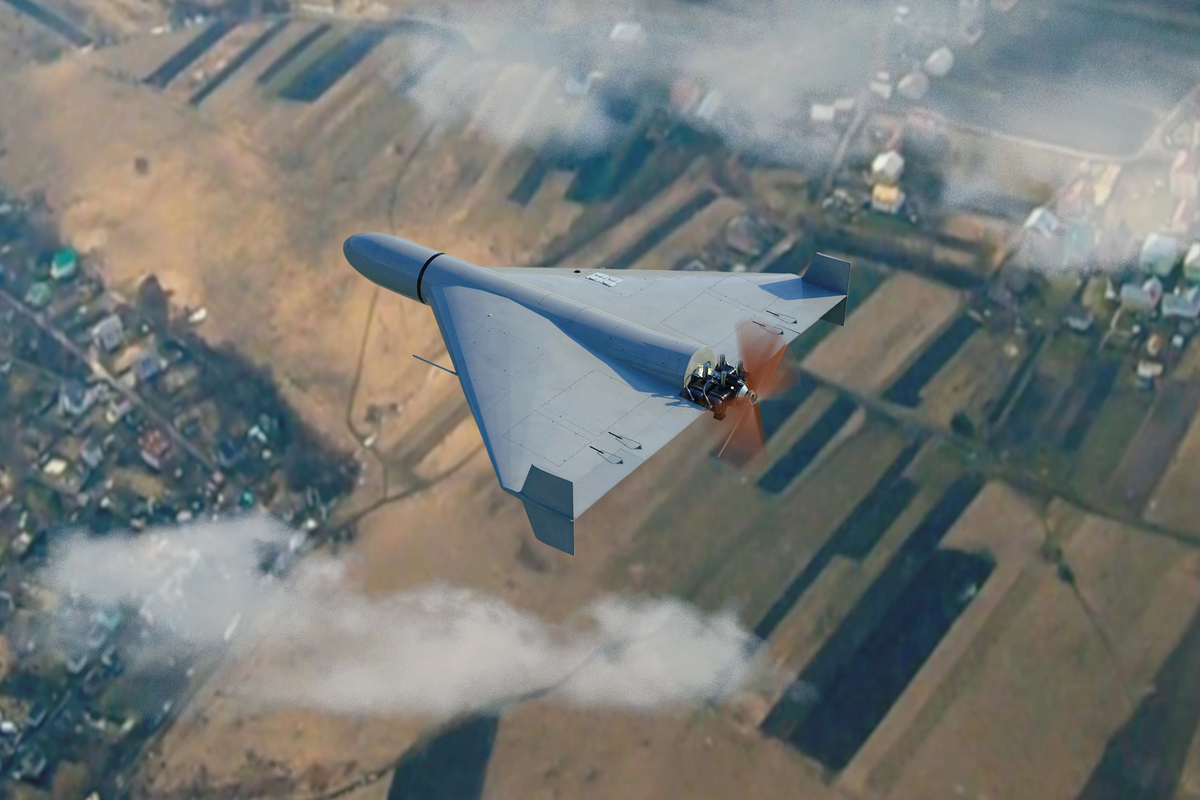War in Europe is no longer a prediction.
The battlefield is littered with swarms of drones, sabotaged cables, nuclear brinkmanship, and oil tankers that double as weapons platforms. Attacks occur in the skies above Poland to the depths of the Baltic, from Romania to Ukraine’s trenches and Europe’s infrastructure.
Follow our coverage of the war on the @Kyivpost_official.
Vladimir Putin’s strategy is to escalate everywhere, at once, daring NATO to blink. And it has. Ukrainian President Volodymyr Zelensky warned, “Putin will not wait to finish his war in Ukraine. He will open up some other direction. Nobody knows where. He wants that.”
Russia now violates NATO airspace with impunity, jams radars, hacked a dam in Norway to open its floodgates, conducts cyberattacks, and uses nuclear blackmail. This “gray zone” campaign is a form of war. Even President Donald Trump agrees that NATO must retaliate by shooting down Russian jets or drones over its airspace. And yet, NATO’s European members dither over definitions. “We are not at war,” Germany’s chancellor, Friedrich Merz, said last week. “But we are no longer at peace, either.”
Counter-escalation by the West is promised, but Europe is unable to stop drones, a major flaw that Putin has exposed and must be addressed. There is talk of a “drone wall.” Fortunately, Trump has talked positively about the export of Tomahawk long-range missiles for Ukraine that would facilitate attacks inside Russia, along with intelligence and satellite support for their deployment. But there is pushback.

Other Topics of Interest
Hungary’s Orban Opposes EU’s Alleged ‘Ukraine War Plan’ via New Petition
Orban has previously tried to validate his views – including opposition to Ukraine’s EU bid – through similar moves, though the local media has questioned their legitimacy.
“Russian President Vladimir Putin continues attempts to deter the US from sending Tomahawk missiles to Ukraine by linking improvements in the US-Russian bilateral relationship to concessions from the United States on the war in Ukraine,” wrote the International Institute for the Study of War. “Putin claimed in an interview published on Oct. 5 that US provisions of Tomahawk missiles would lead to the destruction of the `emerging positive trend’ in US-Russian relations – linking the prospect of improved US-Russian relations with limits on US support for Ukraine.” At the same time, Putin doubles down on attacks against Ukrainian civilians.
Washington’s narrative has shifted from Ukraine cannot win to Russia is ‘losing’, shored up by Pentagon facts that Putin has lost one million soldiers and only gained 1% of Ukraine. Such declarations have resulted in withering criticisms by Trump about Moscow’s failing military, and his recent, nasty description of Russia as a “paper tiger.” The attitudinal turning point came because Ukraine unilaterally took the war directly to Moscow to stop its cash flow by attacking its oil refineries, ships, pipelines, and ports with its home-made missiles, drones, sea drones, and special operations.
Thus, Ukrainians demonstrated to Trump that they had “more cards” than Russia. To date, their attacks have reduced Russian refining capacity by an estimated 38%, resulting in billions of dollars in lost export income and causing blackouts and lengthy gasoline lines. This, in turn, has forced Putin to impose an additional “war tax” on his people of 2% on all goods. Russians now suffer from higher taxes, shortages, a sputtering economy, staggering casualties, soaring inflation, 20% interest rates, and face another aggressive drive to conscript 165,000 men to join their flagging army.
Also demoralizing are reports inside and outside Russia that the government has built a new mega-crematorium to cope with rising war casualties. “St. Petersburg will expand its only crematorium to become Europe’s largest, boosting capacity to 240 cremations a day,” wrote Kyiv Post. Russia’s top military leadership is also in chaos as rumors of a looming purge of high-ranking officers abound. Not surprisingly, the army chief, Valery Gerasimov, has turned to alcohol, since his army has failed to achieve most of Putin’s objectives.
Even so, Putin rolls out more weapons, such as nuclear threats and a massive “shadow fleet” of rust-bucket tankers. Only recently has Europe heavily sanctioned and started to interdict this armada of boats that grew from 200 before the 2022 invasion of Ukraine to more than 1,000. They transport illicit oil and contraband and are now directly involved in the war against Europe. They sail under fake flags, registered to phantom companies, and insured by paper firms in opaque jurisdictions. Last Christmas, a Russian tanker named “Eagle S” sliced through undersea cables in the Gulf of Finland. In September, German authorities intercepted a Russian-crewed vessel suspected of launching drones to spy on European infrastructure.
Each month, Estonia tracks these ships daily in the Baltic. When its navy tried to stop one, the “Jaguar,” Moscow scrambled MiG-31 fighters into Estonian airspace. The message was clear: Russia considers this ghost fleet a “critical national interest” worth defending by force.
Instead of warning and shooting down the jets, Commodore Ivo Värk of Estonia told the press: “There’s not much we can do.” Like “smaller dogs yapping at a big dog,” Europe’s patrol boats chase Russian tankers while Moscow covers their escape with jets. Nearly one-fifth of the world’s oil-tanker fleet now operates in “shadow” fleets. Some even “register” with entirely fictitious countries. Michelle Bockmann of Windward, a maritime intelligence firm, put it bluntly: these ships are a “giant floating middle finger to the international rules-based order.”
Russia also has a stealth fleet of military warships and submarines plying European waters. Last week, its cover was blown when one of its gigantic nuclear submarines suddenly surfaced near Gibraltar due to an “accident” on board that represented an “explosive hazard.”
Putin purposely stokes nuclear fear. His army quickly occupied two major nuclear reactors after its original invasion in 2022. That year, President Zelensky warned that Putin intended to blow up the largest nuclear plant to thwart Kyiv’s counteroffensive. Washington’s response at the time was to promise to monitor the situation (via the IAEA or International Atomic Energy Agency), then added that there were no indications Russia was going to use nuclear weapons.
But this completely missed the mark: An occupied nuclear plant that is blown up or allowed to melt down becomes a nuclear weapon. Russia seized and still controls both the mothballed Chornobyl nuclear facility as well as Zaporizhzhia, Europe’s largest. Recently, Russian occupiers blocked essential repairs designed to avert a meltdown that would affect a vast region of Europe. IAEA chief Rafael Grossi recently said: “Never before has there been such an emergency at the plant.” On Oct. 1, Russian forces also launched drone attacks that targeted facilities of the Chornobyl Nuclear Power Plant.
Putin “plays” Europe with these tactics. A meltdown in either nuclear plant would not only devastate Ukraine but also poison Europe – or Russia if the wind blew easterly. Other nuclear plants inside Ukraine could be weaponized, a nuclear hostage situation played in slow motion. In Europe, Russian saboteurs cut Europe’s cables and probe its defenses. This is the next phase of Putin’s decades-long hybrid war to conquer the continent. As one European intelligence officer put it: “Every day, we are already at war with Russia. The only question is when we will admit it.”
The War in Europe is not coming – it is here. NATO must shoot down drones or jets after a single warning, as Turkey did a few years ago. Russian tankers globally must be boarded and banned. The transfer of $300 billion in seized Russian reserves must be expedited and sent to Ukraine to bolster its military, infrastructure, and people. Kyiv must be equipped with an Iron Dome and a supply of long-range missiles to attack its enemy. No excuses, no euphemisms. Kick Russia out of the United Nations, all international organizations, and declare it a terrorist state.
Zelensky and Ukraine are the canary in the coal mine. The War in Europe has begun. The question is whether all its victims are willing to admit it and then wage it.
Reprinted from [email protected] – Diane Francis on America and the World.
The views expressed in this opinion article are the author’s and not necessarily those of Kyiv Post.
